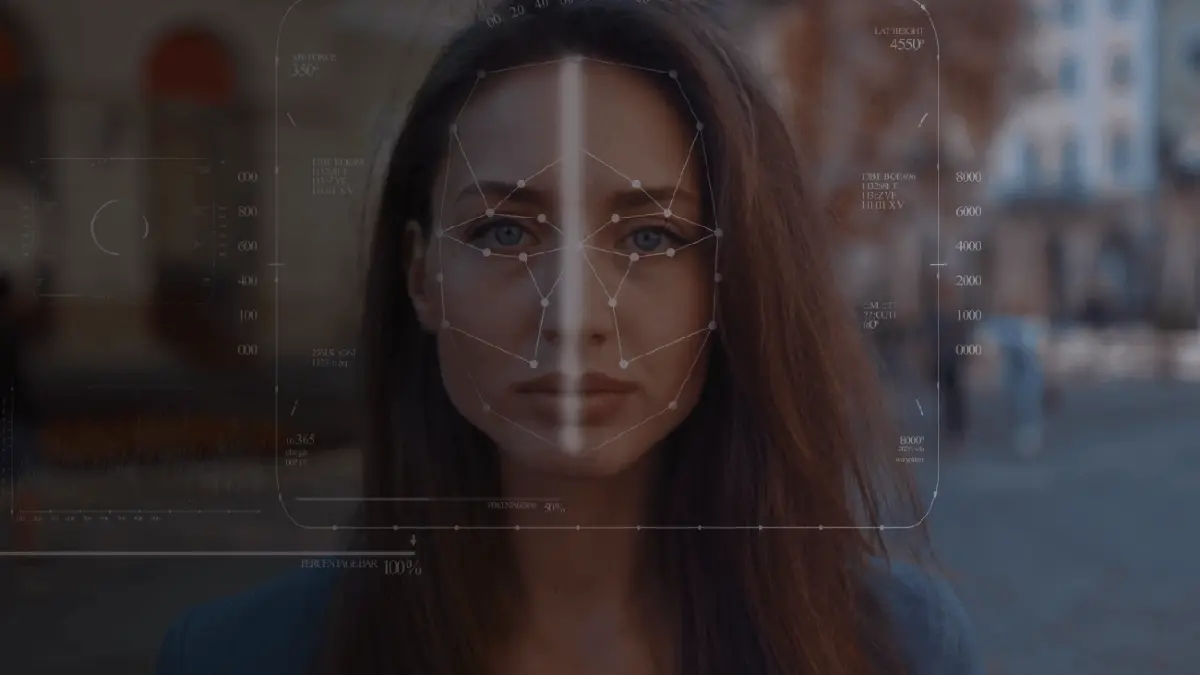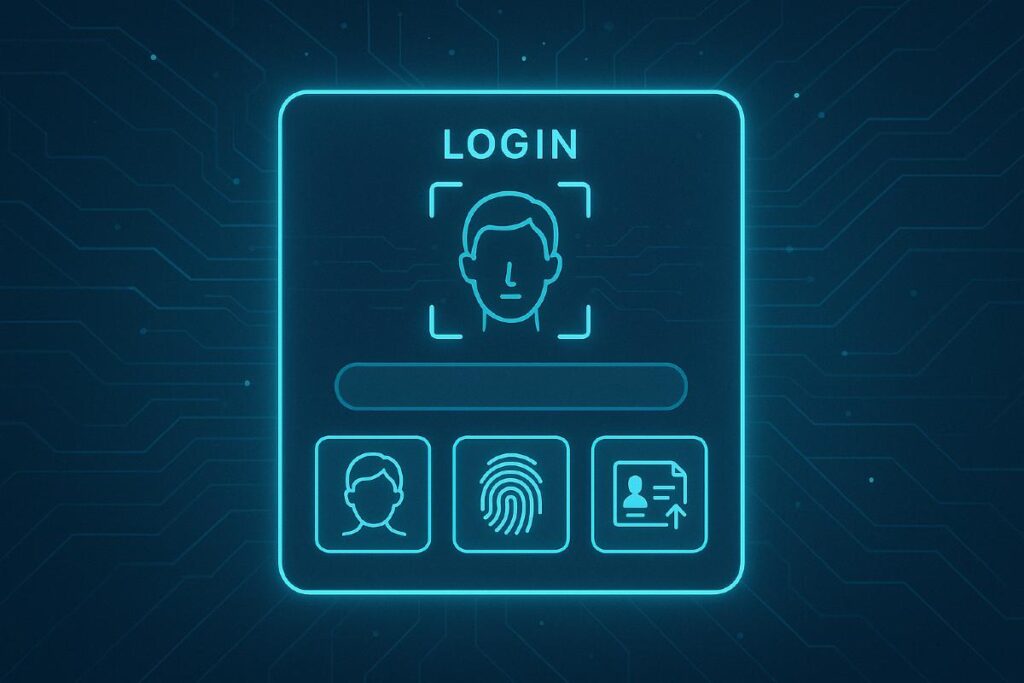
What is Digital Identity?
Our digital identity plays a huge role in how we live and interact online. But what does “digital identity” really mean? For over a billion people around the world, it means something they don’t have—the ability to prove who they are. Without it, they’re shut out of essential services like healthcare, education, and even the right to vote.
Your digital identity represents your personal information online – from usernames and passwords to biometric data and digital footprints. Many internet users don’t realize how their online identity affects their daily interactions.
Not understanding digital identity can lead to serious problems. The U.S. Federal Trade Commission reported 842,000 identity theft cases in just nine months of 2024. This is a big deal as it means that the numbers have already surpassed 2023’s total. American adults lost $43 billion to identity fraud in 2023. The economic opportunities are huge – McKinsey’s research shows that digital ID coverage could boost economic value by 3-13% of GDP by 2030.
This piece covers the basics of digital identity verification and management tools that safeguard your online presence. You’ll learn about social and legal implications and how different states’ digital identity programs are reshaping identification systems. Everyone needs to understand these concepts to navigate today’s digital world.
Contents
- 1 Role of Digital Identity in the Online World
- 2 Digital Identity’s Core Components
- 3 How Digital Identity Verification Works
- 4 Social, Legal, and Ethical Implications
- 5 Global Trends and National Digital Identity Systems
- 6 What is Digital Identity Frequently Asked Question
- 6.1 What is a Digital Identity in Simple Terms?
- 6.2 How does Digital Identity Verification Work?
- 6.3 What are the Key Components of a Digital Identity?
- 6.4 How does Digital Identity Impact Privacy and Security?
- 6.5 What are some Global Trends in National Digital Identity Systems?
- 6.6 Why is Digital Identity Important in Today’s World?
- 6.7 How is Digital Identity Different from Traditional Identity?
- 6.8 What Role does Biometric Technology Play in Digital Identity?
- 6.9 What are the Risks of a Compromised Digital Identity?
- 6.10 How are Businesses Using Digital Identity to Improve Services?
Role of Digital Identity in the Online World
Digital identity has grown beyond a technical term to become everything in our connected world. The way we exist in the digital world shapes our online interactions and opens up opportunities in the physical world.
What is Digital Identity and Why It Matters
Digital identity represents who we are online through our personal information—a unique collection of data points that identifies us in digital environments. It covers usernames, passwords, biometric data, browsing history, online profiles, and other attributes that show who someone is online. This digital fingerprint contains information we choose to share and data we leave behind as we browse online.
Digital identity forms the basis of authentication and authorization—these elements enable trusted digital communication between people, organizations, and devices. Identity theft happens every 22 seconds in the U.S. with losses reaching $10.20 billion, which makes trust verification crucial. More than that, digital identities make the economy available to more people. These identities act as gatekeepers to vital services like online banking, e-commerce, healthcare, and government services.

Digital Identity vs. Digital ID: Key Differences
Digital identity and digital ID might sound alike but mean different things. For example, digital identity has all the information created by someone’s online activity. A digital ID proves who you are electronically—just like a passport or driver’s license does in real life.
Here’s a simple way to understand: your identity has all the traits that make you unique, while your ID proves that identity. Organizations and governments issue digital IDs that need secure identification systems. Your digital identity grows naturally through online interactions and exists on many platforms at once.
How Digital Identity Connects to Your Real-world Self
Our online and offline lives have mixed by a lot. Digital identity works as an extension of who we are in real life. Physical traits shape our digital presence, and our online reputation affects real-life opportunities.
To cite an instance, companies check job candidates’ social media profiles, and our online reputation often comes before us in social settings. People living in states with digital identity programs can access tax records, healthcare portals, and banking services using government-issued digital credentials.
The extended self concept explains this connection well. Our digital assets and online personas extend our identity just like our possessions did traditionally. These elements shape how we see ourselves and how others see us.
This growing connection between digital and physical identities creates new possibilities and risks. While it makes shared access to services easier, privacy and security concerns remain. Advanced AI technologies can alter someone’s appearance and voice online to create “deep fakes” that look real. This technology further complicates how our virtual and physical selves relate to each other.
Digital Identity’s Core Components
Your unique online presence comes from several distinct components of digital identity working together. Physical ID cards need multiple elements, and the digital world works the same way. Your digital identity builds from various online markers that show who you are on the internet.
Usernames, Passwords, and Email Addresses
Simple credentials are the building blocks of most digital identities. The most common way to verify identity uses usernames and passwords. These act as keys to your online accounts. Email addresses work as universal IDs that link different services and help recover lost credentials. Experts call these “something you know” – authentication that depends on what you remember.
Users have full control over these simple identifiers, which makes them both adaptable and at risk. You can change them if someone hacks them, but thieves can steal them through phishing attacks and data breaches. Security experts don’t think username/password combinations alone provide enough protection.
Biometric Data and Device Fingerprints
Biometric data uses your unique physical traits as highly secure verification methods. These identifiers split into two main groups:
- Biological biometrics: Fingerprints, facial features, iris patterns, and retinal scans
- Behavioral biometrics: Voice patterns, typing rhythms, gait (walking patterns), and signature dynamics
Biometrics give better security because nobody can easily share, lose, or copy them like passwords. Yes, it is “something that’s part of the user” – natural traits that almost nobody can fake. Device fingerprints combine various features from your hardware and software to create unique profiles, including IP addresses, browser details, and other technical markers.
Digital Footprints and Behavioral Patterns
Digital footprints show the data trail you leave during online activities. Two distinct types exist: active footprints from intentional sharing (social media posts, reviews) and passive footprints collected without you knowing (browsing history, tracking cookies).
This part shows what you do online and how you do it. Companies analyze this behavioral data to customize experiences and predict what you like. Digital footprints grow automatically – each click, search, and purchase adds to your expanding digital shadow.
Attributes, Preferences, and Traits
Personal attributes and preferences complete your digital identity. These include:
Personally identifiable information (PII) – data that directly identifies you, like your name, birth date, and contact details. Personalization data – digital markers that don’t automatically identify you but boost your profile, such as search queries and activity patterns. Online tracers – identity hints from your behavior like ratings, reviews, and content posts.
These components create the foundation of digital identity verification. Different states run digital identity programs using various combinations to authenticate citizens. Your digital identity keeps evolving, mixing both conscious self-expression and automatic data collection to build your detailed online persona.
How Digital Identity Verification Works
The digital world needs reliable ways to verify online identities. Remote interactions have become common, and both businesses and users need to understand how verification systems work.
What is Digital Identity Verification?
Digital identity verification confirms people’s claimed identities in online environments. The process connects a person’s biographic data securely to biometric data like facial images or fingerprints when they apply for services or make purchases. This verification builds trust in digital interactions and lets organizations deliver services safely to customers worldwide.
Most verification systems compare user information against trusted databases or check digital images of identity documents. The process aims to build trust in remote business relationships while following regulations.
Authentication vs. Authorization
Authentication and authorization play different roles in identity verification, though people often mix them up. It proves users are who they claim to be—the first security step. Authorization then decides what these verified users can do within a system.
Picture visiting a friend’s house: authentication is like having the right key to enter, while authorization decides which rooms you can visit once inside. Understanding digital identity means knowing this vital difference between proving who you are and determining what you can access.
Multi-factor and Risk-based Authentication
Multi-factor authentication (MFA) boosts security by asking users to provide two or more verification factors from different categories:
- Something you know (passwords, PINs)
- Something you have (smartphone, security key)
- Something you are (fingerprints, facial recognition)
Users who enable MFA rarely get hacked because attackers can’t meet all security requirements, even if they crack one factor.
Risk-based authentication builds on this idea by checking contextual factors during login—device details, location, network data, and resource sensitivity. The system uses risk scores to grant normal access, ask for more verification, or deny access.
What is Digital Identity Verification Software?
Digital identity verification software helps businesses confirm customer or employee identities remotely without in-person meetings. These platforms check documents (like passports), verify biometrics (facial recognition), detect liveness (ensuring real person presence), and verify against databases.
Modern verification solutions, especially in states with digital identity programs, use artificial intelligence to deliver quick, accurate results and fight fraud. This software balances security, compliance, and user experience—helping companies meet KYC and AML requirements while providing a smooth customer experience.
Social, Legal, and Ethical Implications
Digital identity extends beyond technical aspects into a complex world of social, legal, and ethical factors. These elements shape our online interactions with systems and each other.
Digital Identity and Privacy Concerns
Privacy leads the challenges of digital identity. Centralized identity systems create major vulnerabilities that attract hackers who want to steal personal information. Digital ID usage leaves trails that could track activities and movements over time.
This raises valid concerns about government surveillance capabilities in states with digital identity programs. A feature called “Phone Home” lets authorities receive alerts when digital IDs are used. This creates systems that track citizens’ interactions.
Legal Frameworks and Data Protection Laws
Regulatory frameworks worldwide have emerged to tackle these concerns. The General Data Protection Regulation (GDPR) in the European Union and the UK’s Data Protection Act give crucial guidelines to organizations that handle personal information.
These rules let users access their data while setting clear accountability standards. Europe’s eIDAS Regulation has created a standard framework for electronic identification. New amendments in 2024 will introduce digital wallets that store identification documents securely.
Digital Death and Posthumous Identity
Digital identity management after death presents new challenges. AI-powered digital resurrection technologies can now recreate deceased individuals’ voices, images, and personalities. This raises deep ethical questions about dignity and respect.
Families often don’t deal very well with questions of access, ownership, and proper handling of digital assets without “digital wills”. Fraudsters known as “ghost hackers” can exploit this posthumous digital footprint—social media profiles, emails, and online accounts—by impersonating the deceased.
Ethical Use of Digital Identity in Business
Organizations that collect sensitive identity data must meet ethical obligations about consent, transparency, and security. Ethical verification solutions should prioritize clear user consent and communicate data usage policies openly.
Companies need to balance security needs with privacy protection, especially with biometric information. Unlike passwords, compromised biometric data cannot be reset. Digital identity verification software must also avoid algorithmic bias to prevent unfair treatment of certain demographic groups.

Global Trends and National Digital Identity Systems
Digital identity systems worldwide are transforming citizen interactions with governments and services. Experts predict governments will issue nearly 5 billion digital IDs globally by 2024.
Examples from Estonia, India, and the US
Estonia leads the digital identity revolution with its eID system. The system has operated successfully for more than 20 years and now supports over 600 citizen services and 2,400 business services. Almost all Estonians (99%) have a digital ID that generates more than 800 million digital signatures. This saves each citizen roughly five days every year.
India’s Aadhaar program stands as the world’s largest biometric ID system with more than 1.3 billion registered users. This 12-digit unique identifier helps combat government subsidy fraud and potentially saves $10 billion yearly.
The United States lacks a complete national digital identity system. All the same, Social Security numbers serve as default national identifiers, while several states have started rolling out digital identity initiatives like mobile driver’s licenses.
Government-issued Digital IDs and Their Effect
Government digital IDs provide better convenience, lower costs, wider service access, and improved security. Estonia’s system adds roughly 2% to the country’s GDP each year. Digital identity verification software plays a vital role to maintain system integrity.
Challenges in Cross-border Identity Verification
Cross-border identity verification faces complications due to different regulations, data formats, and standards between countries. Managing digital identities across borders needs flexible approaches that comply with both local and international laws.
What is Digital Identity Frequently Asked Question
What is a Digital Identity in Simple Terms?
A digital identity is the online representation of an individual, comprising various data points such as usernames, passwords, biometric information, and online activity records that collectively identify a person in digital environments.
How does Digital Identity Verification Work?
Digital identity verification is a process that confirms an individual’s online identity by comparing provided information against trusted databases, analyzing identity documents, and often using biometric data like facial recognition or fingerprints.
What are the Key Components of a Digital Identity?
The core components of a digital identity include basic credentials (usernames, passwords, email addresses), biometric data, device fingerprints, digital footprints from online activities, and personal attributes and preferences.
How does Digital Identity Impact Privacy and Security?
Digital identity significantly affects privacy and security as it involves the collection and storage of personal data. While it enables access to various services, it also raises concerns about data protection, potential surveillance, and the need for robust security measures to prevent identity theft.
What are some Global Trends in National Digital Identity Systems?
Global trends in national digital identity systems include the implementation of comprehensive digital ID programs like Estonia’s eID and India’s Aadhaar, which offer citizens convenient access to numerous services. However, challenges remain in cross-border identity verification due to varying regulations and standards across countries.
Why is Digital Identity Important in Today’s World?
Digital identity is essential because it enables secure access to online services such as banking, healthcare, and e-commerce. It also plays a critical role in preventing fraud and ensuring trust in digital interactions.
How is Digital Identity Different from Traditional Identity?
Traditional identity relies on physical documents like passports or ID cards, while digital identity is based on electronic data and online activity. Unlike paper-based verification, digital identity can be instantly verified and used across multiple platforms.
What Role does Biometric Technology Play in Digital Identity?
Biometric technology, such as fingerprint scanning, facial recognition, and voice authentication, strengthens digital identity by making it harder to forge or duplicate. It adds an extra layer of security beyond passwords and PINs.
What are the Risks of a Compromised Digital Identity?
If a digital identity is compromised, it can lead to identity theft, financial loss, fraudulent transactions, and unauthorized access to sensitive information. Recovery can be challenging and often requires extensive security measures.
How are Businesses Using Digital Identity to Improve Services?
Businesses use digital identity to streamline customer onboarding, reduce fraud, personalize services, and comply with regulatory requirements like KYC (Know Your Customer). This improves efficiency and builds trust with users.


